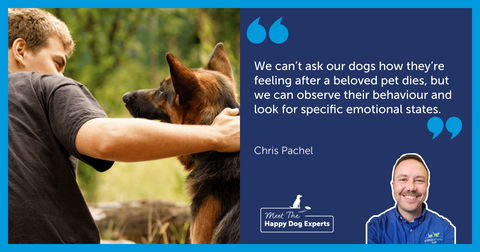
Make your dog a safe zone - Separation Anxiety Top Tip
Why do I need to make my dog a safe zone?
Our puppies and dogs need an area where they feel safe and are happy to relax in. This area should never be used as a form of punishment, and if possible your dog should have free access to and from it.
It should be an area they can retreat to, relax and enjoy. If you are training to help with separation anxiety, they need to be used to and happy staying in this area, even if you are at home.

Top Tips for a safe zone:
- Make sure it's always accessible, for example if you decide to use a crate, make sure the crate door is open for them to access when they like. Obviously there will be a time where they may need to be slightly more contained, so make sure you also practice this little and often until they are happy. When a dog is happy with an area they will quite often take themselves there, so it needs to be accessible.
- The zone should be for your dog only, you don't want to let anyone in to upset your dog.
- You should not use the safe haven to tell the dog off or for time out.
- Place the safe zone in an area where your dog is not likely to be disturbed.
- When you are training your dog to be comfortable being left alone, you ideally want in position for where one day they will be left.
- Make it super comfy! Use their bedding, blankets, items with your scent, their favourite toys etc. Covering it with a blanket or sheet can also help some dogs feel cosy and safe like they are in their den, but also some dogs like to have the choice to see out.
- If you have more than one dog, make sure the zone is big enough. Ideally you want each dog to have their own part. Ensure each animal in the home has their own safe haven, so there isn't competition.
- This is the ideal place to plug in your ADAPTIL Diffuser as they will be spending most of their time here. It ensures they are getting those comforting pheromones to reinforce the safe feeling and can also help create the positive association when training to get used to their safe place, being alone and ensure they are feeling reassured.
- Practice 'settle', training, this sets them up for some useful relaxed skills. The Dogs Trust shows you how to do this, you will find the link at the end of this blog.
- To distract your dog from being worried provide rewards, toys, food puzzles (e.g. Kong with yummy treats inside) or long lasting safe chews. This helps build up a positive association, we have a list of yummy treats your can use.
Tools you may need to create your safe zone:
- Blankets
- Bedding
- A Crate - make sure you introduce your dog to this in the right way. Advice on crate training is available at the PSDA, find the link at the bottom of this blog.
- Plug in ADAPTIL Calm Home Diffuser near to the area to release comforting pheromones to help your dog feel super secure
- Home items with your scent can help - e.g. an old t-shirt that you've slept in
- Radio/TV - some dogs prefer to have background noise and if they are concerned and worried by outside noises this can help muffle the sounds
- A dog camera - so you can keep checking on them and see what they're up to, look at how they are coping or hear for any stress or fear related behaviours. These are beneficial even if you are in the house as you can check what they're doing in the zone without disturbing them
- Treat toys such as a Kong or Lickimat with appropriate treats
Read more about Crate Training from the PDSA and for more video training advice, you may find this Settle Training from The Dogs Trust useful.








































